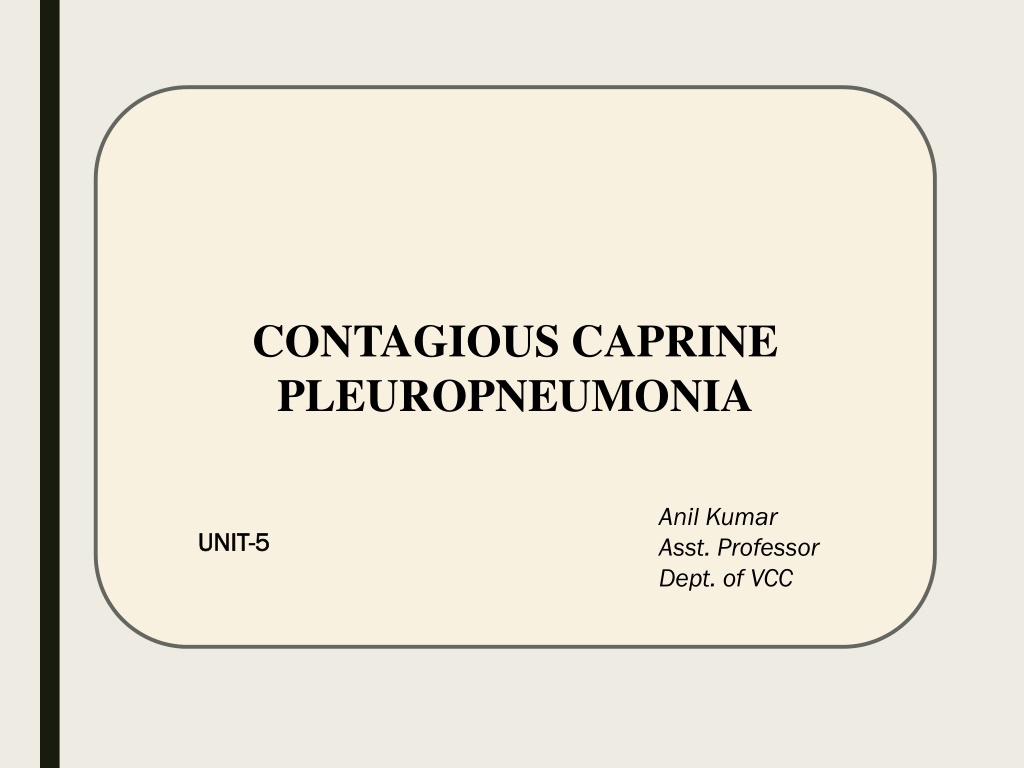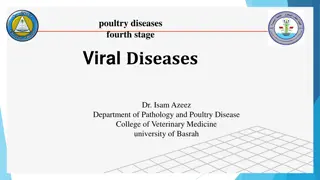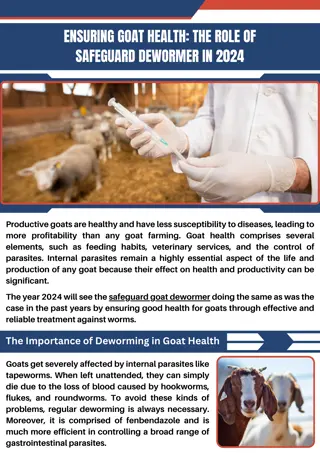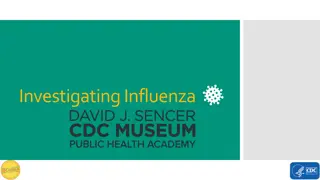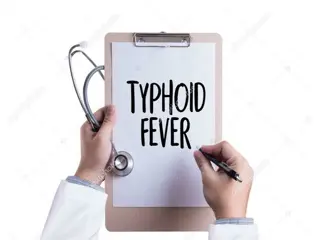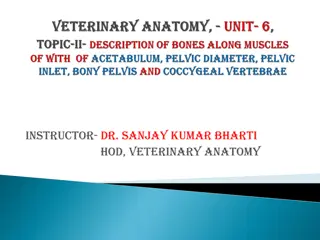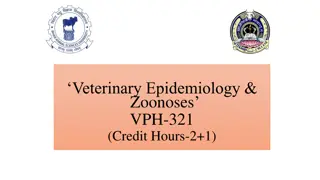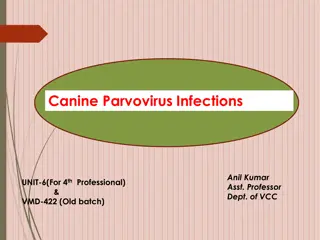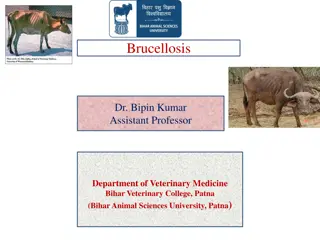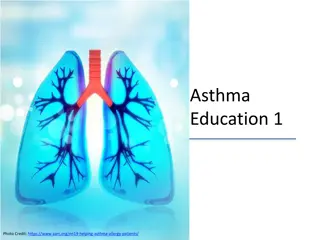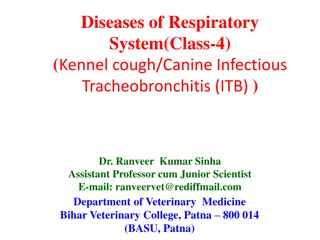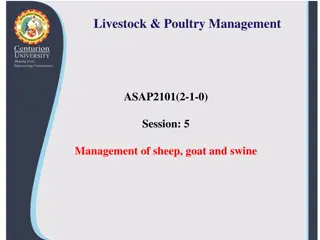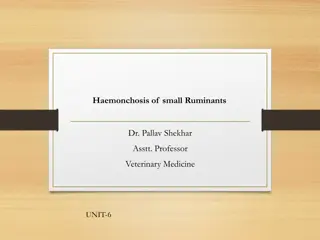Understanding Contagious Caprine Pleuropneumonia in Goats
Contagious Caprine Pleuropneumonia is a severe and frequently fatal respiratory disease affecting goats in India. Caused by Mycoplasma capricolum subsp. Capripneumoniae, it is not transmissible to cattle or sheep. The disease spreads through close contact and inhalation of respiratory droplets, with outbreaks often following heavy rains. Clinical signs include anorexia, dullness, fever, and painful cough, with a high mortality rate within 6-10 days. Diagnosis involves isolation and identification of the agent, with treatment options including macrolides and strict hygiene measures. Vaccination and control measures are essential for prevention.
Download Presentation

Please find below an Image/Link to download the presentation.
The content on the website is provided AS IS for your information and personal use only. It may not be sold, licensed, or shared on other websites without obtaining consent from the author. Download presentation by click this link. If you encounter any issues during the download, it is possible that the publisher has removed the file from their server.
E N D
Presentation Transcript
CONTAGIOUS CAPRINE PLEUROPNEUMONIA Anil Kumar Asst. Professor Dept. of VCC UNIT UNIT- -5 5
severe contagious and frequently fatal diseases Affects the respiratory tract Recorded from all states of India Introduction Introduction Mycoplasma capricolum subsp. Capripneumoniae (Mccp). More fragile does not survive outside the animal or in the external environment for long time Not transmissible to cattle and sheep Etiology Etiology Goats are the primary hosts, but Sheep may be affected In wild ruminants kept in a wildlife Host Range Host Range Close contact ( inhalation of respiratory droplets). Outbreaks often occur after heavy rains (e.g. after the monsoons in India). Carrier animals Infected objects, vectors, fomites and animal products. Transmission Transmission
(M. IQBAL Yatoo M. IQBAL Yatoo et al., et al., 2019) 2019)
Pathogenesis: (Presented in Fig. 2) can be summarized as below: I. Inhalation is the commonest route of infection through aerosol transmission II. colonization III. ciliostasis of epithelia, serofibrinous pleuropneumonia, vasculitis, and fibrinocellular exudation IV. Mycoplasmal antigens (polysaccharides, galactan, lipoprotein) activate immune system V. stimulation of inflammatory and oxidative cascade VI. Mycoplasma capricolum subsp. capripneumoniae may also affect other organs like joints, eyes, and udder.
Figure 2. Pathogenesis of Figure 2. Pathogenesis of Mycoplasma Mycoplasma capricolum capricolum subsp. subsp. capripneumoniae capripneumoniae
IP, 6-10 Days, Mortality-100% Anorexia, dullness, respiration, fever and painful cough Dyspnoea, open mouth breathing, protrusion of tongue and salivation depression, nasal discharge, abdominal Clinical findings Clinical findings Clinical and PM findings. Isolation and identification of agent CFT (Carrier animals) Tube precipitation test (Very sensitive, for confirmatory diagnosis ) Immunobinding assay (Rapid test for field diagnosis) Diagnosis Diagnosis Macrolides (Tylosin @ 10 mg/Kg, IM for 3 days )is considered the drug of choice against Mccp Oxytetracycline @ 15mg/Kg IM for 6-8 days and Other antibiotics like fluoroquinolone (Enrofloxacin). Isolate the animal Strict Hygienic measure Vaccination: Longley s formalized/carbolized vaccine Attenuated live culture vaccine @ 0.2 ml intradermal at ear tip, 15 month immunity Treatment Treatment &Control &Control
